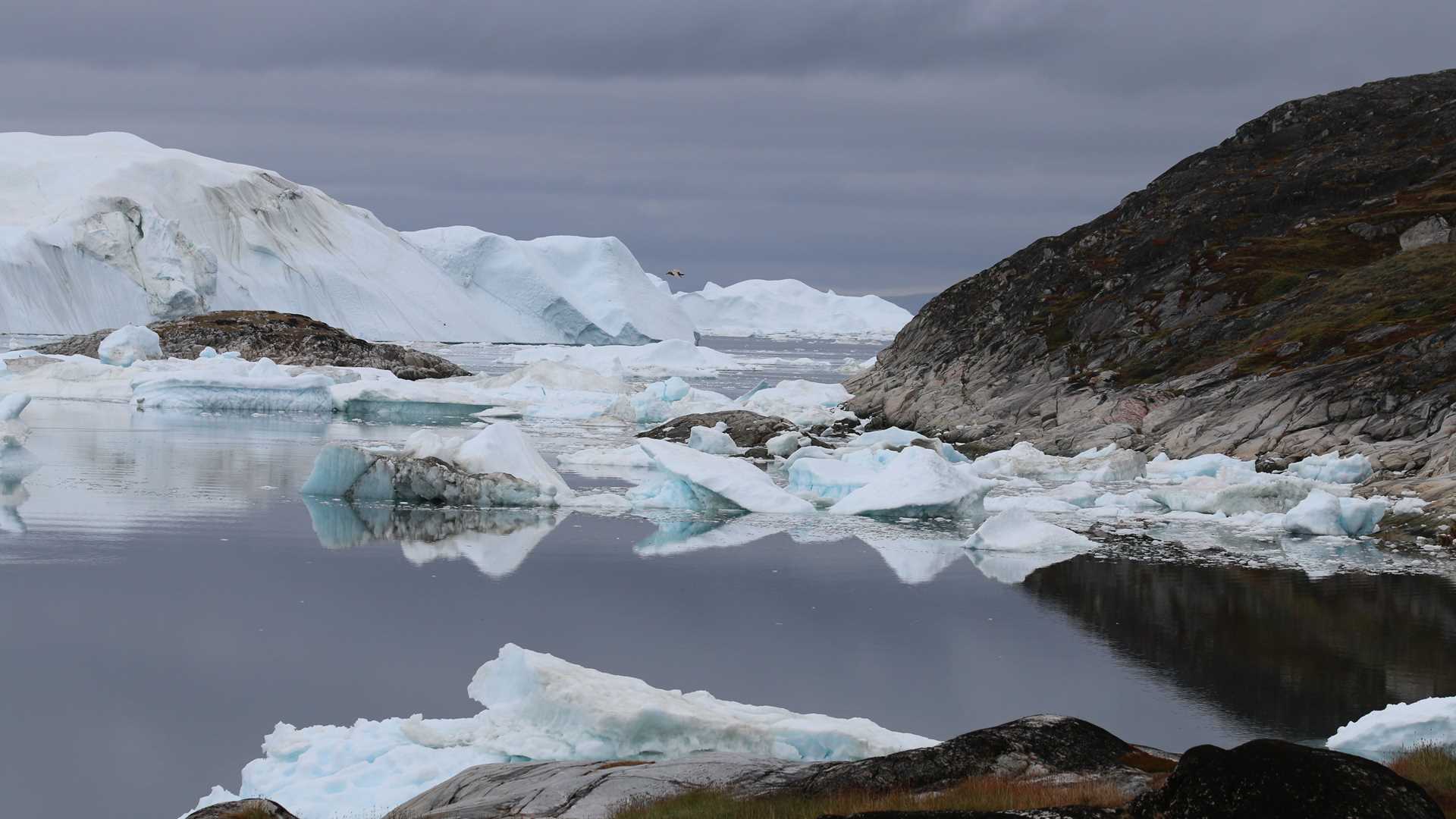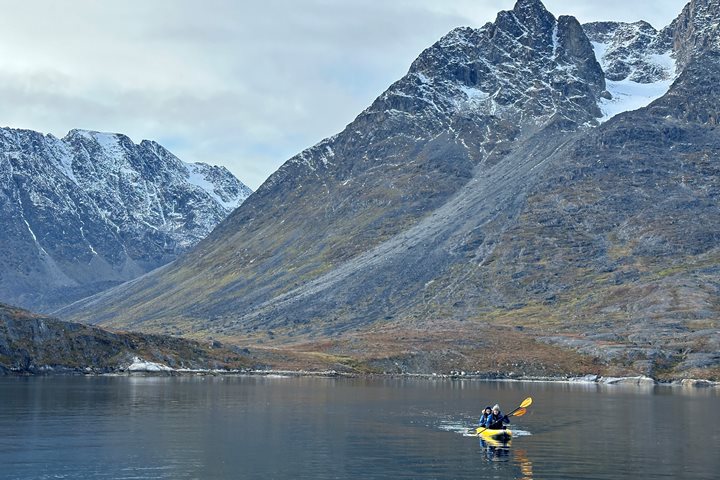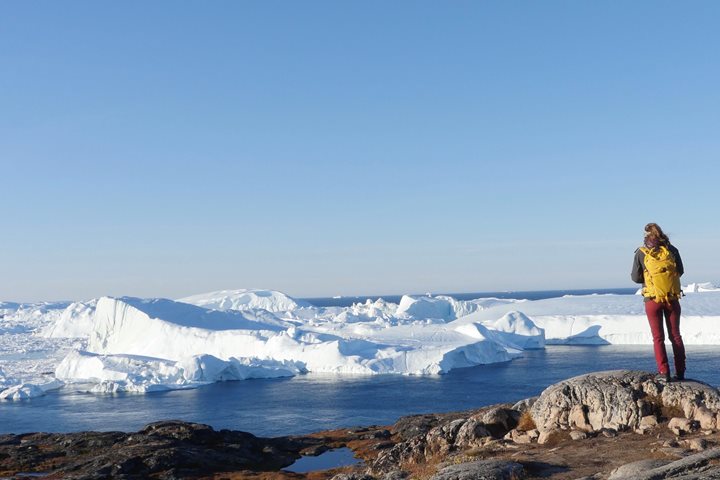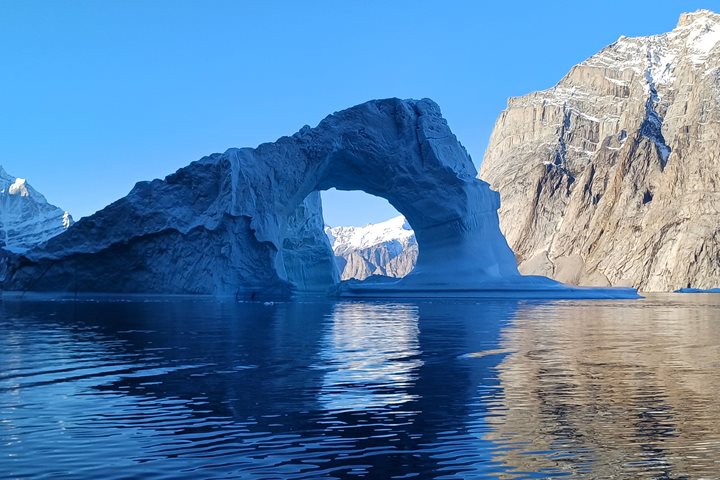The National Geographic Explorer sailed south overnight, arriving at the Ilulissat Icefjord World Heritage Site as breakfast was served. True to its name, we found the entry to the harbor blocked with icebergs large and small. Other vessels had turned away, and our local agent felt fairly certain we too would be unable to land. But our resourceful crew used Zodiacs to nose chunks of ice bigger than trucks out of the way, and the captain was able to expertly ease the ship up to the dock.
The muted light of a stormy sky made it an excellent day for photography. We boarded local boats and the expert local captains took us out among the big icebergs, where a cold wind and lots of rain made us glad for our wool hats and warm gloves.
Guests split their time between boats cruising among the icebergs, and a walking tour to see the ancient settlement of Sermermiut, which is part of the Ilulissat Icefjord World Heritage Site, and the stream of ice that marches from the glacier to the sea.
As tourism in the Arctic increases, visitor impacts to fragile ecosystems are a growing concern. It would be far too easy to love the Arctic to death! Here at Ilulissat, an extensive system of wooden boardwalks helps protect the tundra. Other historic sites we visited in Greenland and Nunavut lack such protection and show signs of damage from visitors treading on the fragile plants and shallow soils. In an area so vast and so sparsely populated, monitoring and managing such impacts is a challenge whose solution will require cooperation between government, local communities, and the tourism industry.







